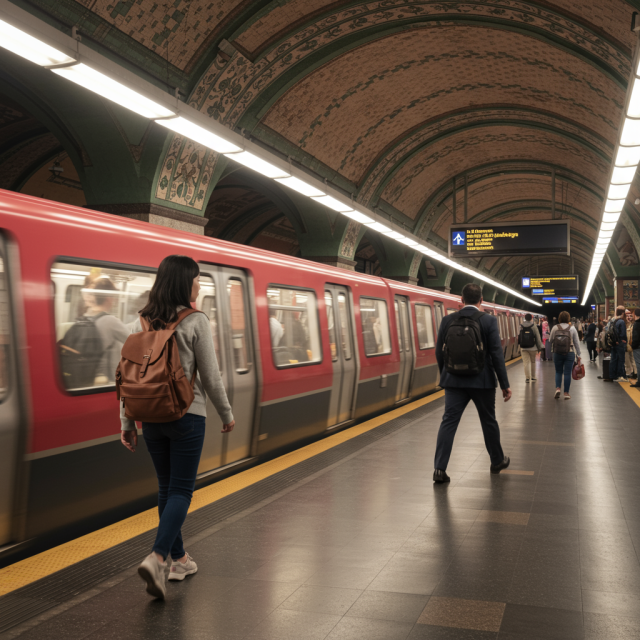Urban Explorer’s Handbook: Mastering Public Transportation in the World’s Top Cities
Traveling to a new city can be exhilarating, but the maze of trains, buses, trams, and metros can also feel overwhelming. Whether you’re a first-time visitor or a seasoned globetrotter, mastering public transportation will save you time, money, and stress. In this comprehensive guide, we explore strategies for navigating the world’s top city transit systems, from Tokyo and New York to Paris and São Paulo. You’ll learn how to plan ahead, purchase tickets, read schedules, and ride like a pro wherever your journey takes you.
Planning Ahead: Research and Preparation
Before you set foot in a new city, invest time in researching its public transit network. Start by visiting the official transit authority website or downloading the local transportation app. Look for route maps, service hours, fare structures, and any holiday or weekend schedules. Join online travel forums or social media groups dedicated to that city to pick up insider tips. Note the names of major stations, transfer points, and your hotel or accommodations. By familiarizing yourself with basic routes and ticket types in advance, you’ll avoid confusion and delays on day one.
Purchasing Tickets & Understanding Fares
Ticketing systems vary widely: some cities use reloadable smart cards, others rely on paper tickets or mobile passes. Identify whether purchasing single-ride tickets, day passes, or multi-day travel cards is most cost-effective for your itinerary. Many major cities offer tourist passes with unlimited rides for a set number of days. Payment options may include cash, credit cards, or local transit cards. Always keep small change on hand in case machines don’t accept large bills. If you go the smart card route, make sure to top up at kiosks, convenience stores, or station booths before your first ride.
Reading Maps, Apps & Schedules
Transit maps can look daunting at first glance, but focusing on color-coded lines simplifies navigation. Memorize the main lines you’ll travel most often and identify key transfer stations. Download offline maps or screenshots in case of spotty data service. Popular apps like Citymapper, Moovit, and Google Maps provide real-time updates, route planning, and service alerts. Activate notifications for disruptions or delays, and always check return schedules—some lines may run limited service late at night or on weekends. By blending analog and digital resources, you’ll confidently plan each leg of your journey.
Navigating Subways & Metros
Subway systems are often the fastest way to traverse a city. Watch for peak-hour crowding around major hubs and plan your travel during off-peak times whenever possible. Stand behind the yellow safety line and wait for doors to open automatically. When boarding, move quickly to the center of the car to make room for other passengers. Follow signage for exits, station names, and landmark directions. If a line splits into branches, verify that the train you board stops at your intended destination. Always listen for announcements in both local language and English, where available.
Riding Buses & Coaches
Buses fill the gaps where trains don’t reach. Boarding procedures differ by city—sometimes you enter at the back and exit at the front, other times it’s the reverse. Signal the driver clearly if the bus stops only on request. Keep your ticket or smart card handy to tap or show upon entry. Observe local etiquette: give priority seating to seniors, pregnant women, and travelers with luggage. Use courtesy by avoiding loud phone calls and turning your volume down on devices. Study route names or numbers and major landmarks along the way to track your progress.
Trams, Light Rail & Ferries
In many European cities, trams and light rail lines complement subways, offering scenic surface travel. Platforms may be street-level or raised—follow platform markings and announcements. Ferries provide an essential link in coastal or riverine cities like Hong Kong, Istanbul, or Sydney. Understand fare integration—some transit cards work across multiple modes, while others require separate passes. Ferries often have fixed departure times, so arrive early and verify docking locations. Enjoy the view, but remain mindful of pickpockets in crowded terminals.
Peak Hours & Rush Commutes
Rush hour can transform a calm commute into a sardine-packed ordeal. In most cities, morning rush runs from 7–9am and evening rush from 5–7pm. Avoid traveling during these windows if you have flexibility. If you must ride, position yourself near the center of the platform where trains stop, and board quickly to avoid blocking doors. Be patient and courteous—locals understand the drill. If your schedule is tight, consider alternate routes using buses or trams that run less frequently but with lighter crowds.
Safety, Etiquette & Local Customs
Observe local customs such as queuing or letting others disembark before boarding. Keep belongings secure—backpacks in front, wallets in zipped pockets, and cameras on straps. Stay aware of your surroundings and avoid empty cars late at night. In many Asian cities, eating or talking on the phone is discouraged or prohibited. In Europe, validating your ticket with a stamp machine prevents hefty fines. A polite nod or simple “thank you” in the local language goes a long way in showing respect to drivers and fellow riders.
Accessibility & Special Needs
Wheelchair users, travelers with strollers, and those with limited mobility should research station accessibility in advance. Many modern systems have elevators, ramps, and designated seating areas, but older stations may lack these features. Official transit websites often list accessible stops and provide phone support or assistance services. Audio announcements and braille signage assist visually impaired passengers, while tactile guides on platforms help orient riders. Planning your route around accessible stations ensures a smoother, stress-free journey.
Money-Saving Strategies
Maximize your budget by taking advantage of multi-day or weekly transit passes, which often cost less per ride than single tickets. Look into city tourism cards that include unlimited public transport and discounted entry to attractions. Use off-peak tickets if available. Compare the cost of ride-share services for group travel or late-night rides when trains and buses have halted service. Walk or cycle for short distances—many cities offer bike-share programs integrated with transit cards, giving you flexibility and fresh air between stops.
Final Tips & Conclusion
With preparation, flexibility, and a dash of local insight, public transportation becomes one of the most rewarding ways to explore a city. You’ll witness everyday life, discover hidden neighborhoods, and connect with local culture. Embrace the unexpected—train delays or route changes can lead to unplanned discoveries. Always carry a portable charger, a small water bottle, and a printed backup map. By mastering the city transit system, you not only save time and money but also gain a deeper appreciation for the urban tapestry unfolding around you.
Happy travels, and may your urban adventures be efficient, enlightening, and unforgettable!














